Massage Therapy for Chronic Neck Pain Near Cambridge, MA
June 14, 2024

Question: What’s the most common cause of chronic neck pain?
Answer: Ligament sprains
The Causes of Pain in Your Neck
For many reasons, your neck can be painful, but most people are unaware of the most common cause of chronic neck pain. Sprained or severely injured muscles can cause pain in the neck, but muscles have a great blood supply and heal quickly when damaged. So, if you have pain in the neck from muscle strain, it’s usually gone in a few days. Ligaments, on the other hand, have a very meager blood supply and heal very slowly. The pain from ligament sprains last for many years, even a lifetime, often getting better and then worse over time.

There are numerous ligaments in the neck, but the ones that often cause severe pain are located in the back and sides of the neck. When these ligaments are overstressed, they can develop tiny tears, and your body’s natural response is to produce scar tissue to heal them.
The Causes of Chronic Neck Pain that Few People Know
Ligaments, the strong cords that keep the vertebrae in your neck in place, play a significant role in neck pain. If you touch the spine at the back of your neck, the ligaments are in between the part of the vertebrae that stick out at the back of your neck. If you press on your spine in the spaces between the vertebrae, you will be on the ligaments. The ligaments at the sides of the spine are harder to find without a fair amount of skill. Most of the ligaments in the neck that are generally injured are very superficial and can be treated by the kind of hands-on therapy that I use and train other therapists in. In some cases, the damaged ligaments are deep in the neck and require other types of treatment.
The Value of Assessment
After a thorough neck assessment, if I gently touch over a dozen ligaments and some are painful, I know that hands-on treatment will help. However, if there is no pain when I touch them, I know I have to refer that client to a physician who can treat the deeper ligaments.

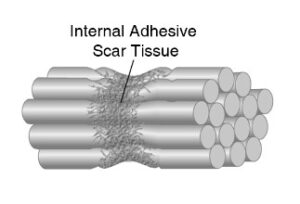
The Culprit in Causing Pain
If scar tissue forms correctly, you won’t have any pain, but if it doesn’t heal correctly, it produces pain that can last for years. Poorly healed adhesive scar tissue is painful and doesn’t allow you to move fully. So, when you turn your head too far to one side or look all the way up or down, it compresses or stretches that poorly formed adhesive scar tissue and causes pain. The pain can feel anywhere, from slight neck or upper back tension to severe pain when you move your head in certain directions.
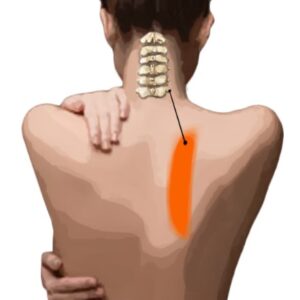
Wake Up Pain
A common sign that the neck ligaments are injured is when you wake up periodically and can’t turn your head in one direction without severe pain. This is usually caused by one of the ligaments at the side of your neck, where your neck meets your shoulder. This often creates a pain that shoots down to your shoulder blade on one side.
Unfortunately, this is not common knowledge in the healthcare field either. So people spend years in pain, unaware that the pain could go away or at least be greatly diminished by the right kind of treatment. The treatment goal is to eliminate the adhesive scar tissue in the affected neck ligaments. This can be accomplished with several types of treatment.
Massage Therapy for Chronic Neck Pain
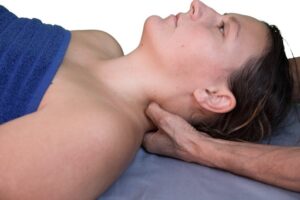
The hands-on treatment is a special type of massage called friction therapy, which was developed and popularized by a British physician named James Cyriax. If the adhesive scarring is in the deeper ligaments, a special type of injection therapy is needed.
Muscle Tension and Pain

As a result of injuries to the neck ligaments, muscle tension accumulates in the back of the neck, where the muscles attach to the back of your head. There are two sets of muscles at the back of the neck. One group of eight muscles attaches all along the lower portion of the skull.
The others are on the skull itself, approximately an inch above the base of the skull. You can feel those muscles working if you put your fingers on the back of your head and raise and lower your eyebrows.

Self-Treatment
You can do two things for yourself: specific neck stretches and use of the Neck Relaxer Device.
Active Assisted Stretching for the Neck
If performed regularly, repeatedly stretching the neck in specific directions for very short periods of time relaxes the neck muscles and stimulates the ligaments to strengthen. The stretches also prevent additional adhesive scar tissue from forming. Click here to learn the stretches.
Active Isolated Stretching (AIS) for the Neck
Ben’s Block Neck Relaxer
You can purchase Ben’s Block Neck Relaxer here!
You can read these instructions or watch the video.
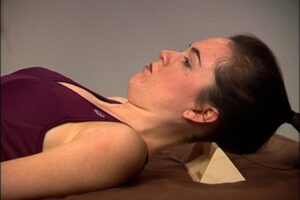
This Neck Relaxer device has three edges. Each edge exerts a different amount of pressure: edge 1 is rounded, edge 2 is semi-rounded, and edge 3 is sharp. To use it, lie face up on the floor or on a firm bed.
Place it under the back of your head at the lowest part of your skull, right where the base of the skull meets the neck. It’s on the bone applying pressure to the muscles.
To begin, have the rounded edge — edge 1 — facing up. If edge 1 is too uncomfortable, you can place a washcloth or towel over it to soften the intensity of the edge.
Later, when your neck muscles are more relaxed, you discard the cloth and lie directly on the block. Lying on the rounded edge, either with or without a towel, rotate your head very slowly — first to one side and then to the other.
When you find a spot that is uncomfortable, stay there. Let your head rest at each of these spots for ten to fifteen seconds, but never leave it in any one place for more than thirty seconds at a time.
If stopping at the uncomfortable points is painful, try a continual slow, rolling motion, which makes it easier. If it tends to slip and your head falls off it you’ll need to stabilize it with your hand.
Once all the discomfort on the lower occipital area have been diminished, move the block up about a quarter-inch higher. When there’s no discomfort at this level, move it a little higher.
When edge 1 no longer causes any discomfort, move on to edge 2, the semi-rounded edge. When this no longer causes any discomfort, move to the sharpest edge, which exerts the most pressure.
Don’t use this technique for more than four to five minutes at a time; otherwise, soreness may develop. If that occurs, stop using the block until the soreness is gone.
You can also increase the pressure by putting your forearm on the forehead. The neck relaxer device helps you reduce your own level of tension and keeps your neck muscles in a more relaxed state.
It works by applying excess pressure on the muscle-tendon unit, which sends a message to the brain: “This is too much pressure.” Then, the brain sends a message to the muscles to relax.
If you are experiencing neck pain and live in the Boston area, schedule an appointment or a complimentary 10-15 minute phone consultation.
Schedule an Appointment or Call →
Ben E. Benjamin holds a Ph.D. in Sports Medicine and was the founder and President of the Muscular Therapy Institute in Cambridge, Massachusetts. He is the author of dozens of articles on working with injuries and chronic pain as well as the widely used books in the field, Are You Tense?, Exercise Without Injury and Listen To Your Pain: The Active Person’s Guide to Understanding, Identifying and Treating Pain and Injury. Dr. Benjamin has been in private practice for over 50 years and teaches therapists throughout the country.
Related Posts
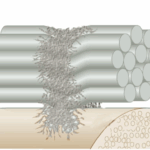
Why Does My Old Injury Still Hurt?
Question: What is the common denominator of chronic pain?
Answer: ADHESIVE SCAR TISSUE

Can Massage Help Pain that Travels? Cambridge MA
Question: Why does an injury to the neck cause pain that travels to the arm and hand? Answer: Referred Pain Pain that travels in your body is called Referred Pain. This phenomenon means the injury is in one place, and the pain is in another. Understanding this phenomenon helps you better understand your body’s responses […]

Can Massage Therapy Help Lower Back Pain Cambridge, MA?
Lower back pain is experienced by at least 50 million people each year in the United States alone. My own severe back pain when I was a teenager is what led me into this field. Back pain is often a debilitating, terrible experience. But it can also be annoying and limiting. I’ve treated hundreds of […]
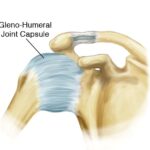
Can a Massage Therapist Fix a Frozen Shoulder in Cambridge, MA
Question: Does a frozen shoulder always go away with time? Answer: Often no. The Causes of Frozen Shoulder A frozen shoulder can be incredibly painful. The pain originates in the shoulder joint. A joint is formed where any two bones meet. It’s the enclosed space between your upper arm bone, the humerus, which is […]

Can Massage Therapy Help Hamstring Pain Near Cambridge, MA
Question: Do you think a similar pain in the back of the thigh while running can be attributed to a hamstring injury or a lower back injury? True or False? Answer: True Hamstring Anatomy You have three hamstring muscles in the back of your thigh. Every muscle has a tendon that attaches it to […]
